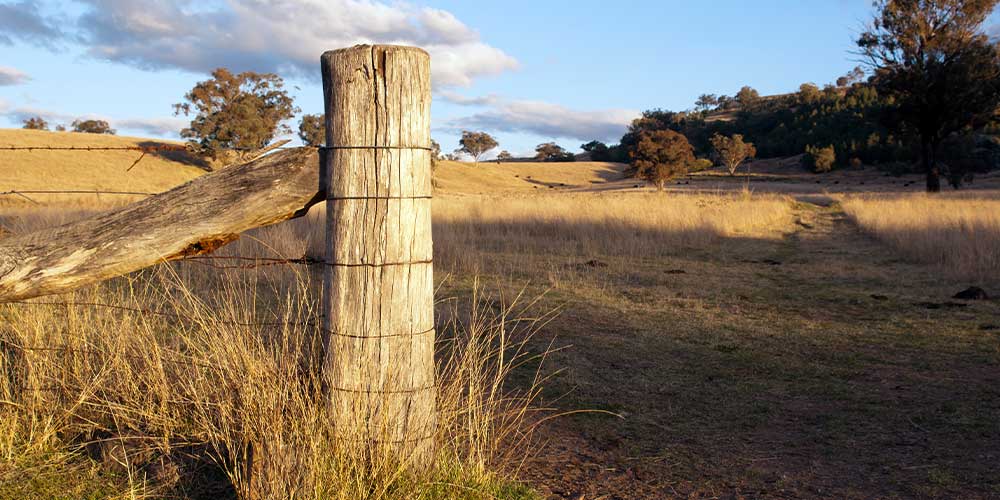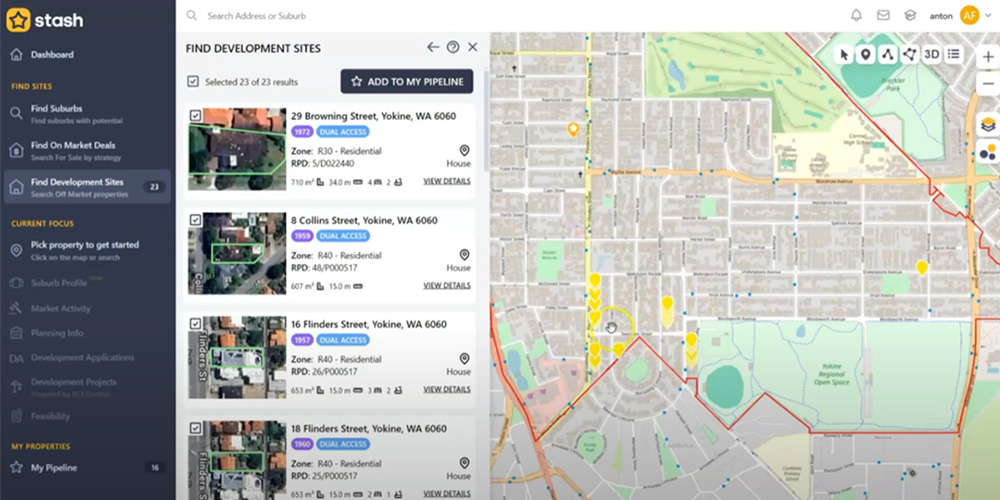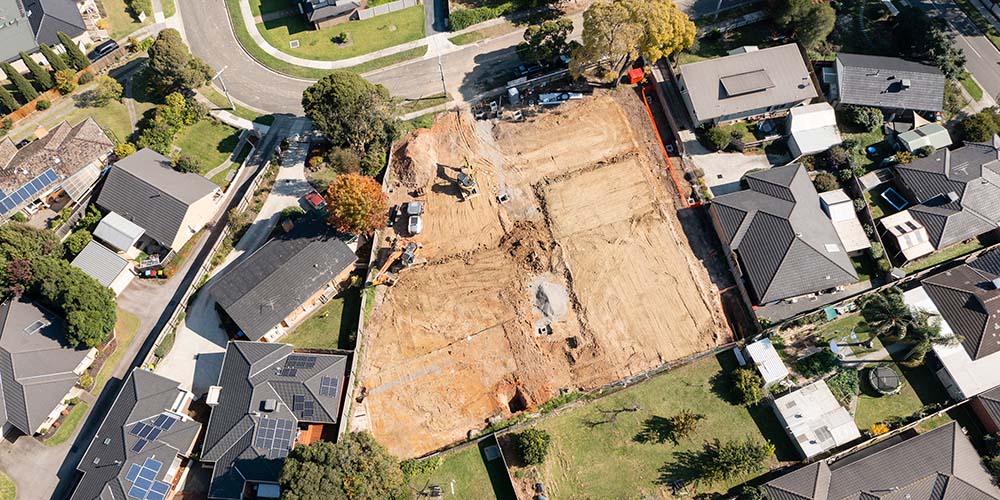
Rural subdivision overview for developers
Rural Subdivision in country WA is a slightly different endeavour to subdividing land in the city.
There are many other considerations from an economic, social, environmental, and planning perspective to consider. I will focus particularly on these in this article and remind the reader that other site considerations are discussed elsewhere on our site and in our eBook.
Subdividing rural land can be highly lucrative, primarily due to the fact you can take control of yield through planning approval process. The parent lot can often be secured at a relatively low cost per lot yielded. A word of caution – price to develop can often be very high especially if services have not yet been extended to the locality.
With the current land shortage in WA and record price growth being recorded over the state there has never been a better time to subdivide land. The market is hot, and the metro development space is highly competitive.
Thanks to COVID though, the way we live and do business is also shifting. The natural question arises – what about rural subdivision? Many people are working from home, and there are shifting needs for suburban residence types and lifestyles. You can now attend a big city meeting via zoom in the comfort of your own home, be it in the suburbs or hundreds of kilometres away in the bush. There are definite sustainable opportunities here.
In previous articles we are often discussed that the devil is in the detail – so let’s have a closer look at what it means, and what is required, to undertake a rural development.
What is a rural subdivision in WA?
When we talk about subdividing rural land, we are generally considering any postcode outside (with a few exceptions) of the Perth metro, where zoning is for rural land use, in one way shape or form. The landscape and flavour of the area in which the development is proposed will typically have an agricultural or natural environment distinction. We also consider residential subdivisions in regional areas, where expanding townsites around regional centres place pressure on adjoining rural or agricultural land to supply land for urban expansion. Often, larger plots of land originally purposed for farming will need to be rezoned as population pressures on local areas increase. Other drivers include a demand for special rural or homestead type land to provide for the growing market of those pursuing either a hobby farm or a sustainable living lifestyle. Lot sizes and layout are restricted by adjoining and area schematic land uses, soil profile, sewerage and utility accessibility, and bushfire planning, to name but a few key considerations.
In my own experience, rural includes subdivision throughout the Southwest, Gascoyne and interior, Pilbara, and the Kimberley. All have been lucrative, but they come with their own set of hurdles and considerations. While many of those considerations play some role in an urban infill project, the stakes are much higher in regional or rural subdivision as the chances of offloading a failed project are very slim indeed.
Key considerations
Factors that must be considered in approaching a rural subdivision fall into three main categories-
- Economic
- Social
- Planning
I place them in this order with a defined purpose. If the first two factor categories cannot be adequately satisfied with some preliminary investigation, then investigating the third becomes almost superfluous. That, or a change in approach is called for.
Economic factors
The reality is that banks, the main lenders especially, are hesitant to approach development in rural areas. Many main lenders have a healthy portfolio of products in what they consider lower risk areas. Rural subdivisions do not generally fall into this category. This is primarily driven by a lack of comparable sales in the area the subject of the development proposal and internal policies towards risk that prohibit lending in certain postcodes. In fact, purchasing a home in any of the regional areas of Western Australia will generally require up to a 50% deposit for the lender – especially in ‘holiday town areas’. This is a policy that is driven by the high price fluctuations in these areas, so the bank will lower its position on the property to half the value of its current market value to allow for the possibility of future default on an asset which is now worth less than when the mortgage was written.
There is no exception when the project becomes larger. It is well worth starting your investigation with a call to a broker to find who would lend money on the project and how much debt coverage can be expected. You may find that private equity or investors are required to fund the entire project.
Other economic factors flow on from what has been discussed already. Rural areas suffer terribly in terms of price fluctuation. The area may be a popular lifestyle or tourist destination. If this is the case, many houses in the town may be second or third homes for the owners. In times of economic uncertainty, a lot of stock may find its way onto the market in these areas which usually see a sharp decline in asset price. Typically, there are less buyers in rural areas in a six-month period than what can be comparably expected in an urban centre.
The area may also have an aging population. Unless there are incentives; either in terms of amenity and employment prospects, the departure of the ageing will need to compensated for by an influx of new family’s and younger populations if the region’s population is to be maintained. Concurrently, where the aged are concerned, a lack of health facilities can contribute to townships and regions experiencing population deterioration. In fact, governments in Italy (which has the world’s oldest population) are today offering lump sum cash payments to under 40’s to try and revitalise many of their southern village districts which are quite literally ‘dying out’. Whilst there is currently no such scheme in Australia message should be clear enough – consider your development with the end buyer in mind – who are they and where are they coming from? If populations are leaving and dying faster than you are building, sales are going to be slow indeed.
Social factors
Rural developments usually occur in localities with smaller, closer communities. These communities often have a strong sense of identity and sometimes, an aversion to change. It is well worth spending some time in the region where you are thinking about developing. A few handshakes and a little pub talk go a long way towards getting a feel for what the locals want and don’t want. Remember that many larger developments may require public advertisement. There will normally ensue a council meeting, where the ratepayers will arrive to announce their opinions. It is a foolish developer who attempts to ignore the locals in a rural community – they band together pretty well! Better to introduce yourself early and get an idea of what has and has not been accepted in the local community in the past.
Consider the market demand in the area. Populations can fluctuate wildly in rural areas, and with them, asset pricing. There will be an estimated 40,000 new workers required in the Northwest in the next two years – many of whom are to be locally based because concerns of COVID spread from urban centres. Vacancy rates in most of these rural centres are currently at record lows and existing housing stock is rising in price rapidly. Some parts of Hedland have seen a price increase of up to 40% in the last 12 months. This pattern is not isolated in the country and there are many development opportunities thanks to housing and rental pressures associated social stresses – consider the needs of the largest proportion of the community in which you are developing to best promote your development.
Planning considerations
If the banks will fund it and the locals will back it, the next port of call is to have a look at planning constraints.
Importantly, what we are talking about when we mention rural subdivision in an everyday language context differs from the same meaning of the word in a planning context. Land zoned ‘Rural’ is guided by a different state policy and guidelines than ordinary residential land.
The primary objective of these policies is to identify land areas that have a significant benefit to the local area as farming land and to preserve this where possible (see Development Control Policy 3.4 – Subdivision of Rural Land). The overall objective of this policy is to avoid ad hoc development that would result in a loss of Rural land unnecessarily. This contrasts with ordinary residential development where the land has already been promoted as housing land. In Rural development, justification is first sought by the commission before a development will be considered or promoted. In assessing what might constitute an unnecessary development, state policy addresses a number of factors (in the Commissions Rural Planning Guidelines). These include consideration of topography, vicinity of nearby developments, servicing and current occupancy of similar developments (supply) in the area. The reader in referred to the Rural Planning Guidelines published by the Western Australian Planning Commission for an in-depth explanation of these policy objectives and how they are to be considered by those promoting or investigating a development.
To implement a rural living zone within an area traditionally zoned as Rural requires consideration of the intent and objectives of State Planning Policy 2.5 Rural Planning. A rural living zone is the promotion of the creation of lots in a rural area that depart from the traditional use of the land in that area. To create a rural living estate requires that the applicant can demonstrate at the development can achieve these objectives.
Development standards considered in the Rural Planning Guidelines include:
- Specification of lot sizes through a coded zoning, scheme provisions or a schedule
- Whether a structure plan is required to coordinate orderly planning and guide future development
- Identification of necessary studies at the ‘first stage’ of subdivision to assess the impact of a scheme text amendment
- Amenity impact of future development to that area
A word of caution – addressing planning constraints can be detailed, expensive and extremely arduous. Reports may take months. Depending on negotiation between the local government and the commission or local development authority, there may need to be numerous revisions – especially where a structure plan is proposed. The complexity and overlap between numerous state acts which will apply in these applications means that a straight answer to an application for approval is often not possible at first instance. Only consultants with experience in the area should be used. Overarchingly – patience, persistence and deep pockets are required to get your applications over the line.
I have listed a few planning items below for consideration with a brief discussion to accompany each as to the potential risks they pose:
- Structure plans – rural subdivisions may require (as promoted in SPP 2.5) the preparation of a structure plan to ensure coordination of orderly development in the area. If the local government or another applicant has not already prepared a structure plan for the area the subject of your proposed development, you as the applicant will be required to do so before an application for subdivision and development approval can be made to the commission and the local government. State policy has been legislated with a view to promote ‘proper and orderly planning’, which was made in response to what the state government considered ad-hoc and irresponsible patterns of rural development in past eras that compromised rural landholding spread suitable for intensive agriculture and support industries. What is required in a structure plan is to demonstrate that the proposed development aligns with broader state and local strategic planning objectives and that the development will serve the needs of the current and future population in a positive way with considerable regard given to environment and culture.Structure plans are expensive to prepare and advertise – all costs are worn by the developer. Included in this process is a period of community engagement and consultation which may result in revisions of the proposal. Many months, and even years can pass, before a structure plan is approved an endorsed. In fact, the minister for planning is required to approve the structure plan in the final part of the process. I have witnessed, for political reasons, the failure of proposals in this final stage
- Bushfire planning – most rural subdivision will fall within a DFES designated bushfire prone area and as such will be subject to scrutiny under the state policy for building and planning in bushfire prone areas. Ancillary to the requirement to engage a qualified bushfire consultant to prepare reports and plans, the applicant will need to demonstrate that it is possible, through clearing and other methods, to achieve a BAL rating which is safe for housing development. These efforts are sometimes hampered by environmental constraints on the site and site topography. Sometime, a larger proportion of the lot/lots to be subdivided cannot demonstrate this adequately and are therefore unable to be developed.
- Heritage and Aboriginal cultural significance – many rural areas contain within them landmarks or site of significance to Australian pioneering heritage or to traditional landowners. Where these areas are identified, approval from the relevant body will be required to develop the site. It is possible that an exclusion zone or a cessation of land rites will be requested. This should be investigated at an early stage as such a site could have substantial ramifications for the viability of the project.
- Natural protection areas and environment – local governments may include an area as a natural protection area or require a ‘rural feeling’ to be maintained in the land and street scape of an area. Where a natural protection area is identified, tree and habitat identification are required. Sometimes a dieback managements plan and numerous other flora and fauna surveys. Some of these can only occur in certain times of the year – adding to waiting time. Importantly, where a threatened or protected species is identified, clearing or development may be prohibited, or an exclusion zone may be required. As hinted above, this can make bushfire management and compliance demonstration particularly difficult.
- Sewer – state policy will normally require access to reticulated sewer for any development. In water catchment areas this is particularly stringent. Sometimes the sewer is non-existent which will limit the development to lot yield predicated on an allowable use of alternative sewerage disposal systems. Where an alternative sewer disposal system is not considered acceptable (as in a water catchment area), you will find that that site may not be able to be developed at all. At other times the sewer may need to be extended a long way to the site and at substantial, sometimes prohibitive, cost to the developer.
Rural subdivision in WA is not without its challenges but can also be highly rewarding. It is riskier, and I trust that the reader understands the importance of getting the right advice early in all rural subdivisions. If you would like assistance with your endeavours to subdivide rural land or tackle a subdivision in a rural centre, we are happy to help.




